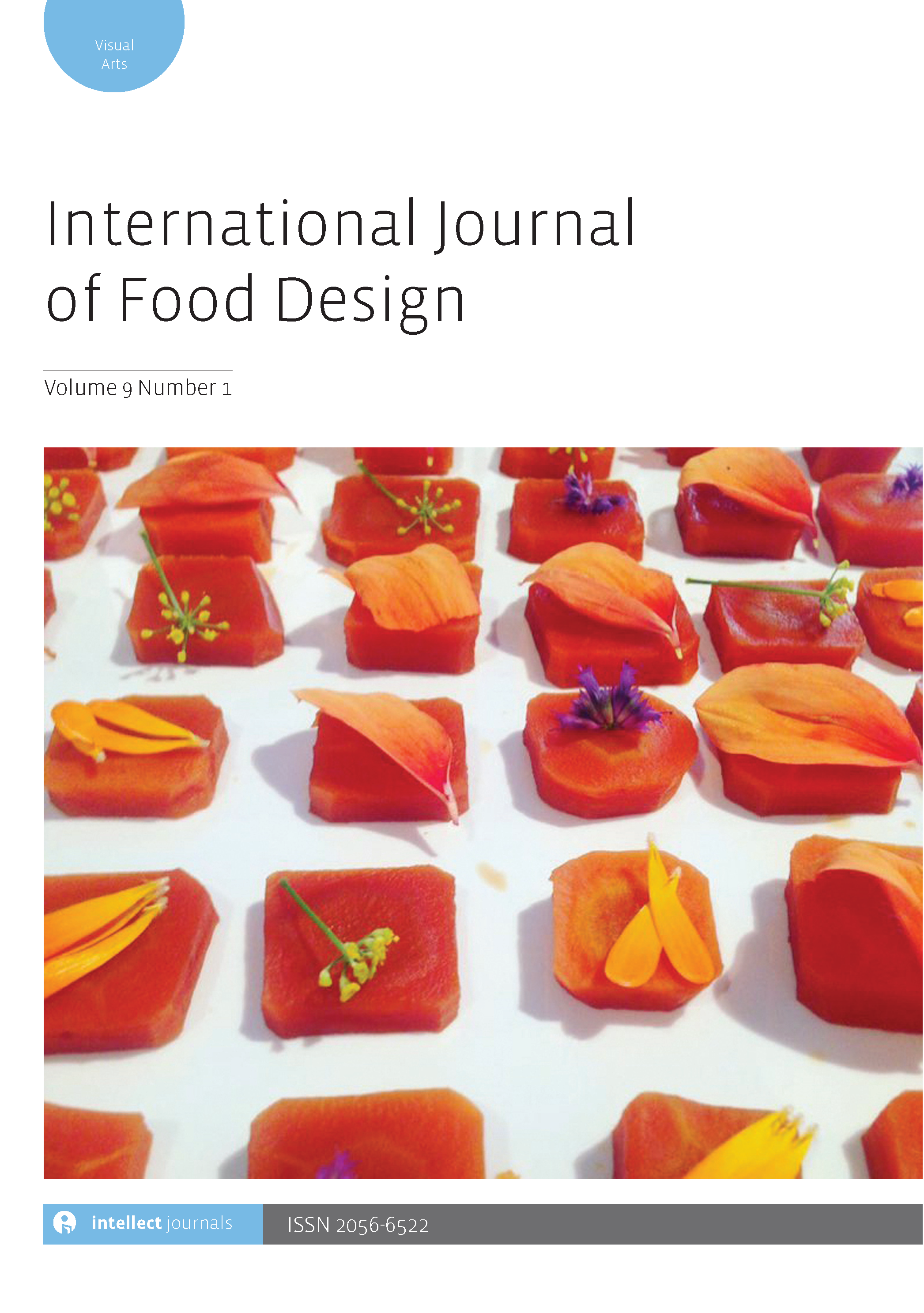-
oa Teaching sensory science to practitioners can change what we eat
- Source: International Journal of Food Design, Volume 5, Issue 1-2: Creative Tastebuds 2020, Dec 2020, p. 103 - 112
-
- 24 Jun 2020
- 31 Aug 2020
- 01 Dec 2020
Abstract
How can we create large-scale changes in our society that lead to more sustainable food consumption? One certain contributor to change is to ensure that the products and meals available in supermarkets, cafeterias, schools, hospitals and restaurants are sustainable while at the same time evoke pleasure, as pleasure is decisive for food choice. There is a need for culinary practitioners to prepare delicious meals based on sustainable ingredients, which require less resources to produce (such as vegetables, algae, legumes, grains, seeds and nuts), and also to use new ingredients (such as production side-streams or insects). However, these ingredients are not necessarily delicious due to, e.g., their bitterness. They may also evoke disgust or be socially unacceptable to eat. Thus, future culinary practitioners need knowledge of how to make these products acceptable and delicious in meals. Sensory science provides a valuable toolbox for evaluating foods, and thus contributes to finding ways to both change sensory properties of foods and improve their deliciousness. Therefore, knowledge about this can contribute to important know-how in culinary arts educations. However, in the current culinary arts educations in Denmark, not much training and education in how to taste and how to carry out sensory evaluation of food is implemented. Taste for Life and the University of Copenhagen have worked with input from vocational teachers on developing teaching materials about sensory science for culinary arts educations. In this opinion article we present the ideas behind the programme and discuss the potential of the material. We hope and expect that it will contribute with knowledge about how to increase deliciousness through a course dedicated to sensory science as part of a culinary arts education.



